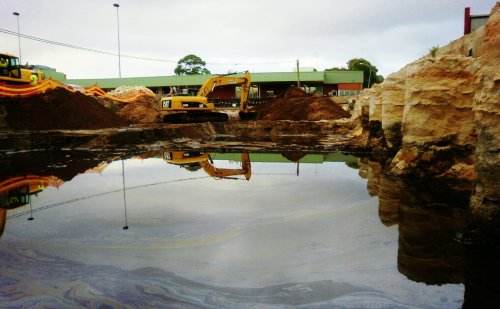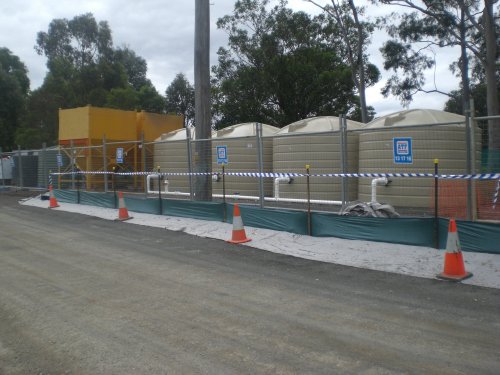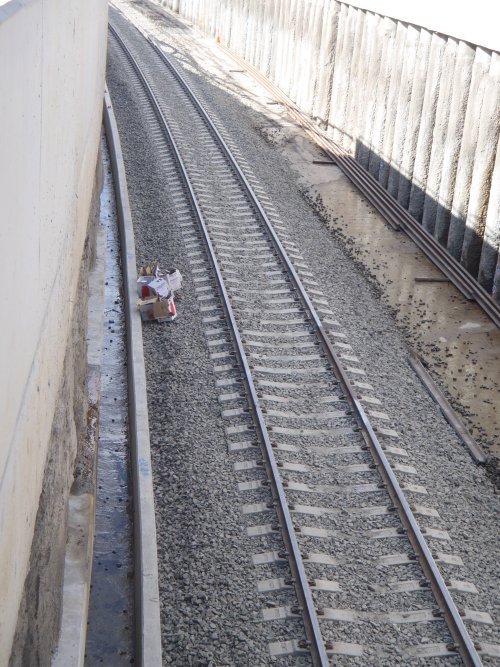Managing contaminated water on construction sites
Tuesday, 23 August, 2011
The legislation, guidelines and criteria that have to be met to discharge water from a construction site have tightened immeasurably over the past decade or more. No longer is it a case of getting the water into the nearest stormwater drain or watercourse, no longer can contaminated water just be pumped down the sewer under basic agreements. The management of water has to be carefully considered before embarking on a construction project.

The most appropriate water treatment method or technology to implement on any given site varies significantly. Influencing factors range from water source, soil nature and geology, groundwater levels, regulatory requirements, off-site receptors, discharge point and many other factors. This, coupled with the physical, chemical and biological impurities of the water that need to be managed and discharged, creates a myriad of issues for construction and development.
The Sefton Dive Water Treatment project forms a part of the construction of the new ARTC Southern Sydney Freight Line (SSFL) that extends from Sefton to Macarthur in NSW. Enviropacific Services was appointed by the principal contractor, Arenco (NSW) Pty Ltd, to design and develop the water treatment works at the construction site.
Cameron McLean, Executive Director of Enviropacific Services, explains that the company has worked on many projects that have treated water contaminated with various chemical impurities including total petroleum hydrocarbons (TPH), heavy metals, polynuclear aromatic hydrocarbons (PAHs) and more. It has also implemented water purification systems to reduce sediments, turbidity, dissolved solids and biological impurities.
“Contaminated water or groundwater on a construction site may need treatment from a process like physical containment of contaminants, bioremediation, multiphase extraction, vapour extraction or more conventional treatment practices involving coagulation, filtration, flocculation and disinfection of contaminated water,” says McLean.
“From experience, partnering with technology providers on a case-by-case basis to produce the most cost-effective and environmentally sustainable solutions for any water treatment issue has proved to be the best solution.”
The Sefton Dive project extends along the rail corridor from 100 m east of Cooper Road, Birrong to Woods Road, Sefton, enabling the new line to run under the Auburn Road Bridge and the Bankstown suburban rail line. The dive excavation is approximately 900 m in length and 15 m wide, with the deepest point at 7 m bgl.
Enviropacific’s Project Manager, James Braham, explains, “Following laboratory testing and bench trials on collected samples of groundwater, Enviropacific designed a system that contained the following primary, secondary and tertiary components: primary treatment included on-site detention tanks, coagulation, flocculation, pH adjustment and sedimentation; secondary treatment included sand filtration/zeolite filtration and GAC absorption; and tertiary treatment included cartridge filtration and reverse osmosis (RO) filtration.”

The water treatment system that is now being used at the site has been designed to treat rainwater and groundwater entering the dive during its construction. Groundwater sits at approximately 4 m bgl and contains elevated concentrations of total suspended solids (TSS), total dissolved solids (TDS), total nitrogen, total phosphorus, iron, chromium, copper, lead, nickel and zinc. A hydrogeological study conducted by Environmental Investigations predicted that approximately 213 m³/day of contaminated groundwater will be encountered during the initial phase of the excavation and gradually the flow rate will decrease over time. Based on this, the water treatment system was designed to run at 3 L/s, treating up to 237,600 L of raw water in a 24 h period. 158,900 L of raw water storage capacity has also been incorporated into the design to allow for heavy rainfall events.
Dealing with the varying quality of the feed water associated with the different construction processes and extreme rainfall events presented further challenges, such as treating high volumes of water during those events and managing residual sludges at the base of the dive.
The treatment plant has been set up within the rail corridor, 15 m from the Bankstown line, which presents additional constraints and safety factors for the project. Dewatering of the excavation is the responsibility of the groundworks contractor, Daracon, who is using a sump and pump method.

The removal efficiency of the system varies between 70 and 95%, meeting the required discharge criteria of the receiving stormwater system which discharges into a local freshwater river 1 km from the site (Duck River).
According to McLean, the water on site is treated to such a high standard it was made available for use at the site. He said the temporary plant will be replaced with a permanent water treatment facility when the project is finished later this year.
New membranes could help eliminate brine waste at desalination plants
Membranes packed with charge can help overcome the current salinity limit, making it easier to...
Balancing energy and water in data centres
World Water Day served as a timely reminder that we all have a role to play in tackling climate...
Greater Western Water uses Gorman-Rupp pump in water delivery project
The Gorman-Rupp pump was selected for Greater Western Water's WIN project to deliver...










